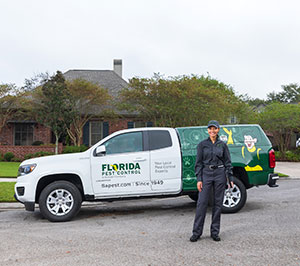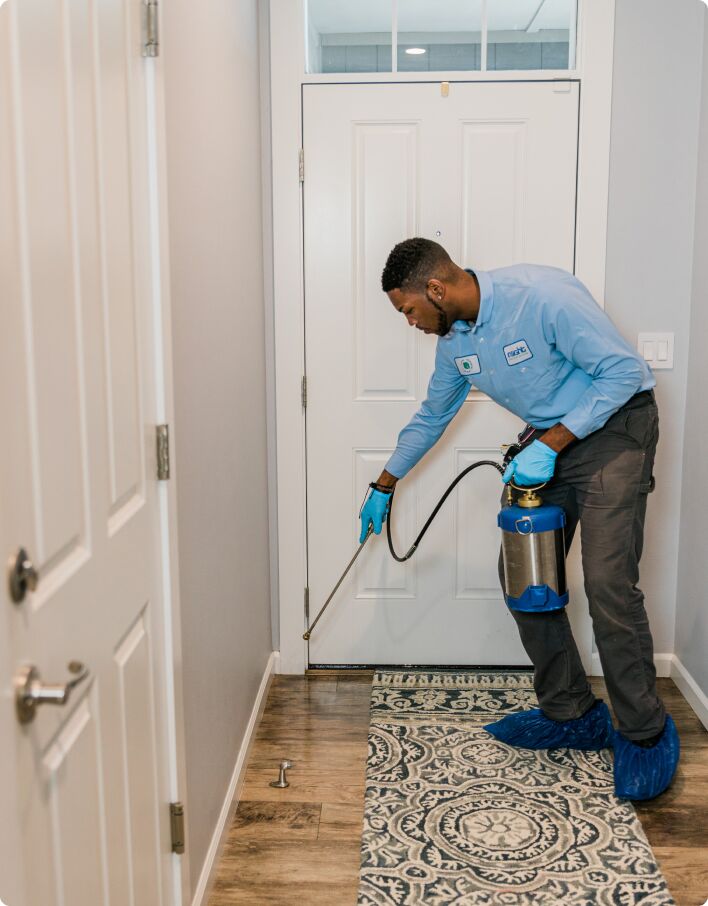Efficient A1 Bed Bug Treatment in Charlotte - Safe and Proven Methods
Efficient A1 Bed Bug Treatment in Charlotte - Safe and Proven Methods
Blog Article
Bed Insect Treatment Malfunction: Contrasting Chemical Vs. Non-Chemical Solutions
In the world of bug control, specifically when dealing with the persistent issue of bed pests, the selection between chemical and non-chemical therapy remedies can be a crucial one. Both strategies offer distinctive benefits and disadvantages, influencing aspects such as efficiency, safety factors to consider, and general expense. By examining the nuanced details of each method, a clearer understanding of which path to seek in attending to a bed pest problem can be obtained.
Performance of Chemical Therapies
Chemical treatments for bed bug problems have been extensively recognized for their rapid and potent efficiency in removing these insects. When taking into consideration the efficiency of chemical treatments, it is vital to understand that they can offer a complete and quick solution to a bed bug trouble.
Moreover, chemical treatments have the benefit of providing residual impacts, implying that they can remain to get rid of bed pests also after the preliminary application. This residual action is particularly useful in combating any kind of potential re-infestations. Additionally, the quick activity of chemical treatments can bring relief to individuals facing serious bed insect infestations, permitting them to regain control of their home promptly.
Security Interest In Chemical Solutions
When using chemical solutions for bed bug therapy is ensuring the security of passengers and the setting,One critical facet that needs cautious factor to consider. While chemical treatments can be effective in removing bed bugs, they may pose threats otherwise dealt with correctly. One of the key safety worry about chemical options is the potential harm they can cause to human health and wellness. Exposure to particular chemicals used in bed bug treatments can bring about breathing issues, skin irritation, or other adverse responses, particularly in people with pre-existing conditions or level of sensitivities. Additionally, inappropriate application or dosage of chemical pesticides can lead to harmful residues sticking around in the cured location, posturing long-lasting health and wellness risks to occupants.
Additionally, the ecological influence of chemical services is one more significant consideration. Some chemicals made use of in bed pest therapies might be damaging to useful insects, wildlife, and communities if they leach into the dirt or water supply. It is important to use chemical therapies sensibly, adhering to safety standards, and taking into consideration much less hazardous choices to alleviate these threats and ensure the reliable and secure monitoring of bed insect invasions.
Advantages of Non-Chemical Methods
Thinking about the possible safety issues and ecological influence associated with chemical remedies for bed insect treatment, exploring non-chemical techniques offers an encouraging choice with a number of distinctive benefits. Non-chemical therapies are environmentally pleasant, as they do not contribute to air or water pollution, making them a lasting selection for insect control.
Additionally, non-chemical solutions can be efficient in targeting bed pests, including hard-to-reach locations where chemical therapies might not penetrate - A1 charlotte bed bug exterminator. Approaches such as warmth therapy, vacuuming, heavy steam cleansing, and cushion coverings offer thorough elimination without the use of dangerous chemicals.
Limitations of Non-Chemical Treatments

Additionally, non-chemical therapies usually call for multiple applications to achieve successful removal. This can be time-consuming and may not constantly guarantee complete elimination of all bed bugs and their eggs, especially in covert or hard-to-reach places.
Furthermore, the success of non-chemical treatments greatly counts on correct application and thoroughness, which can be challenging for people without specialist competence. Insufficient application of non-chemical approaches may lead to incomplete elimination, causing persistent invasions and the demand for extra therapies.
For that reason, while non-chemical treatments have their advantages, it is important to recognize these limitations and consider them when identifying one of the most efficient strategy for taking care of bed insect infestations.
Cost Contrast: Chemical Vs. Non-Chemical Options
Offered the limitations connected with non-chemical treatments, an important facet to review in the context of bed insect management is the price contrast in between chemical and non-chemical choices. Chemical treatments normally entail the application of insecticides by experts, which can vary from $250 to $900 per room, depending upon the extent of the infestation and the dimension of the area to be treated. In contrast, non-chemical therapies like heat treatment or steam can be extra expensive, with expenses ranging from $1,000 to $6,000 for a whole home. While the first cost of chemical treatments might appear reduced, several therapies may be required to totally get rid of the infestation, potentially enhancing the overall price. On the other hand, non-chemical alternatives might offer a more sustainable and environment-friendly service, although they can be cost-prohibitive for some individuals. Eventually, when taking into consideration the cost of bed bug therapy choices, it is crucial to weigh the upfront expenses versus the efficiency and lasting sustainability of A1 bed bug exterminator charlotte the picked approach.
Final Thought

Taking into consideration the prospective safety concerns and environmental influence connected with chemical remedies for bed bug treatment, checking out non-chemical methods presents an appealing alternative with several distinctive benefits.Provided the constraints associated with non-chemical therapies, a crucial element to examine in the context of bed insect monitoring is the expense contrast in between chemical and non-chemical choices. In contrast, non-chemical therapies like warm treatment or heavy steam can be a lot more pricey, with expenses ranging from $1,000 to $6,000 for a whole home. While the first expense of chemical treatments may seem reduced, numerous treatments may be needed to completely eradicate the infestation, possibly boosting the overall price.In verdict, when comparing chemical and non-chemical bed pest treatment choices, it is important to think about efficiency, safety and security, benefits, limitations, and price.
Report this page